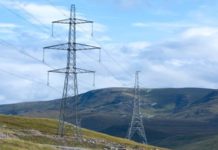
United Utilities has reorganised its energy function to deliver an integrated approach to procurement, management, flexibility and resilience. Neil Gillespie, director of energy & market services, says the strategic shift enables the company to cut costs and carbon, adapt more quickly to a changing regulatory environment, and support the transition to a smarter, cleaner energy system.
The UK energy system is in a period of unprecedented change. As we move towards a low-carbon economy and technological developments continue apace, the lines between generators and end users are becoming blurred. More and more companies and individuals are installing technologies like solar PV or battery storage to produce their own low carbon energy and take greater control of their energy bills. And regulation has been struggling to keep up – until now.
The stream of new consultations, roadmaps and strategies coming from Beis, Ofgem, National Grid and others is evidence of significant changes afoot in the industry. Perhaps one of the most significant is the sweeping reforms to network charges proposed by Ofgem. As triad avoidance became more and more beneficial, and more consumers participated, it was always inevitable this system would eventually need reform. But as the potential options available to recover the costs of running the UK electricity network emerge, it looks likely that future charging could be even more complex than it is today.
This is just one example of increasing complexity for end consumers like United Utilities. It’s an issue we have decided to meet head on. By refocussing our energy activities to seize on the emerging energy sector revolution we are formulating a strategy which is good for us, our customers and the UK.
A three-pronged approach
Operating water and wastewater treatment plants and distribution networks is a complex enough business without having to worry about managing the electrical infrastructure too. At United Utilities we have taken away this additional complexity by delivering a complete energy service to our water and wastewater operational business. Our Energy Services model brings together the various energy functions from around the business into one team. This allows us to focus on providing a secure supply of low cost electricity to our operational sites so that managers are left to do what they do best – delivering high quality water and wastewater services to our customers.
Energy Services is focussed on three main areas:
The Energy Infrastructure Services team is responsible for making sure incoming electricity infrastructure and back up supplies to all of our sites are maintained to the required standards and provide the electrical resilience we need. This includes managing our relationship with the local distribution network operators for planned and unplanned interruptions. Put simply, their role is to keep the lights on, so we can keep the water flowing.
The Energy Performance Management team helps our site teams drive down their energy costs. We have embedded energy engineers into the operational teams, who work together to analyse energy performance and identify and deliver improvements to reduce consumption and cost of power. We have also developed our own energy portal, which provides detailed electricity consumption and generation data for every site, alongside indicators of relative efficiency (for example, the amount of energy required to produce a megalitre of water). This capability is being developed to take advantage of AI and machine-learning to analyse the vast amount of data we have on energy consumption and plant performance. This will help us improve the efficiency of our sites even further.
Finally, the Energy System Operation team makes sure that we make use of the flexibility we now have within our operations. While we need electricity to power our operations we do have some choices about when we operate certain plant and whether or not we can ramp up or ramp down both power consumption from our operational assets and generation from our back-up generators and CHP engines.
Understanding this flexibility and having the tools to control these assets allows us to optimise the lowest cost supply of power and also earn revenues from a variety of demand side response markets. This is a really exciting area for us and we have been developing our approach over the last five years. It’s a win-win – we help the grid balance the electricity network by helping with security of supply and removing the need for investment. Plus, we get paid for providing the services, which offsets the cost of the electricity we consume.
Renewables push
Focussing on energy and innovation has also driven us to increase the amount of renewable power we use, minimising our carbon footprint and helping to tackle future challenges around climate change.
Over the last four years, our renewable energy business has had tremendous success, building more than fifty separate solar PV installations (including a 3MW floating solar array at Godley, near Manchester), four wind turbines and a hydro scheme across some of our largest facilities in the North West. Our estate now has the capacity to deliver 40GWh of renewable power to our sites every year. This complements the 140GWh of renewable energy we already produce through CHP, hydro and the injection of biomethane gas into the gas grid. In total, we are now generating around a quarter of our energy needs ourselves.
Benefits and challenges
We believe our model can deliver real benefits for our business. A reliable and resilient supply of electricity coupled with lower energy consumption and ensuring energy supplied at the lowest overall possible cost helps us to deliver our services at the lowest sustainable cost too. It is great news for customer bills and is entirely consistent with our aims as a responsible business.
But many challenges remain. Market access is still the most fundamental concern for us and other flexibility providers. Notwithstanding welcome changes promised to National Grid’s procurement of ancillary services (SNAPs) and widening access to the Balancing Mechanism, ensuring that large energy consumers are a part of and engage with a future energy system is of paramount importance if decarbonisation is going to occur at the lowest possible cost to end consumers.
Related stories:
Free 2018 demand-side response report
UU renewables output climbs 12% to 176GWh
United Utilities and Severn Trent joint venture starts selling energy
United Utilities generates 18% of power from renewables, eyes more solar
United Utilities to supply water to Tesco in Scotland
United Utilities begins work on 3MW floating solar plant
United Utilities eyes big demand-side response push – if price is right
Click here to see if you qualify for a free subscription to the print magazine, or to renew.
Follow us at @EnergystMedia. For regular bulletins, sign up for the free newsletter.



